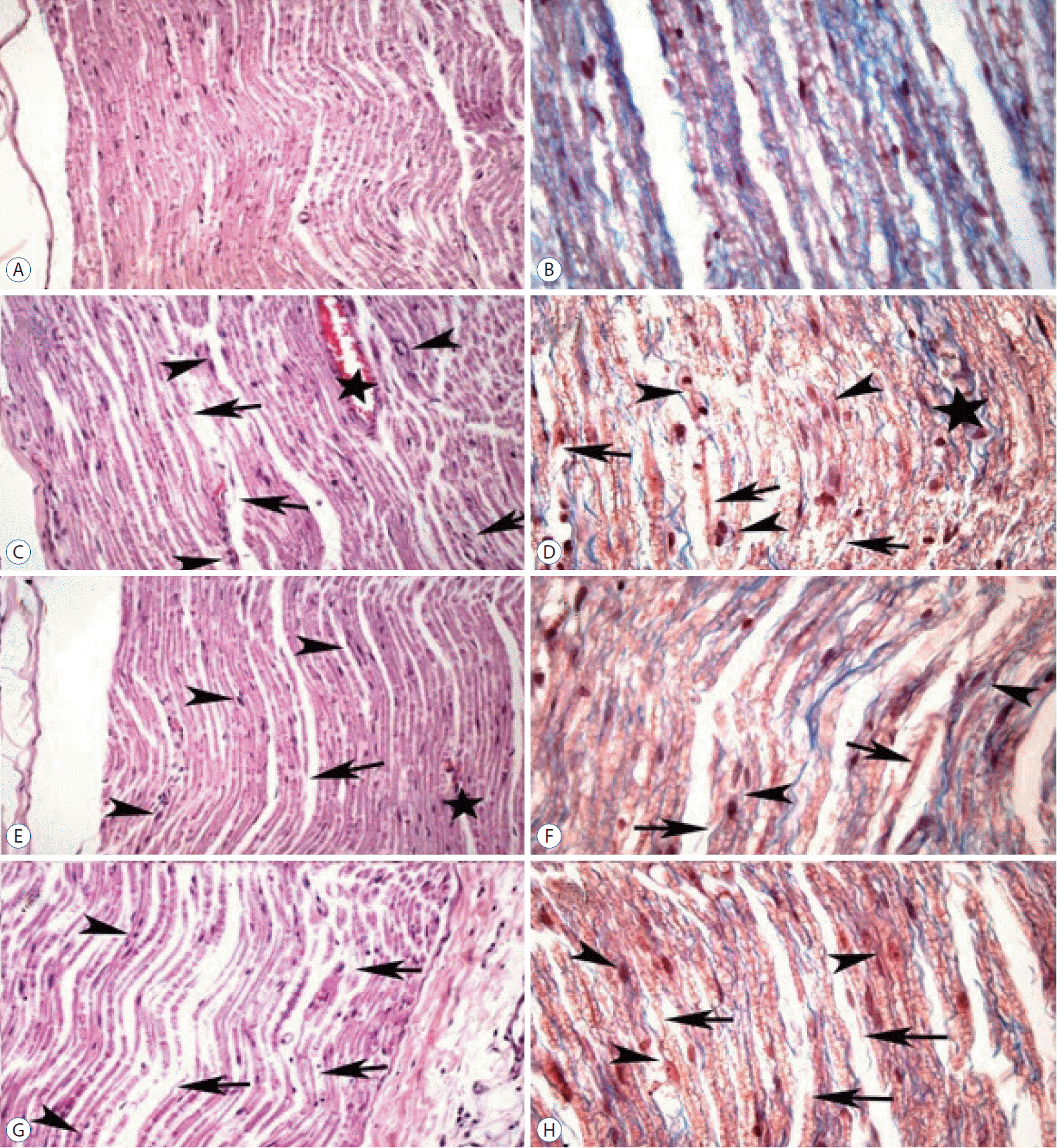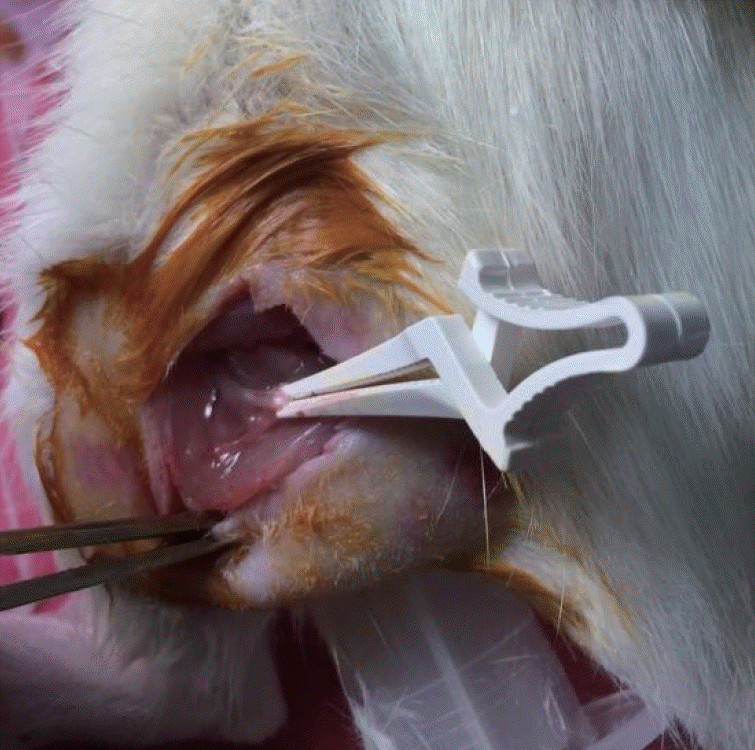1. Ahn JY, Yan BC, Park JH, Ahn JH, Lee DH, Kim IH, et al. Novel antiepileptic drug lacosamide exerts neuroprotective effects by decreasing glial activation in the hippocampus of a gerbil model of ischemic stroke. Exp Ther Med. 10:2007–2014. 2015.

2. Altun I, Çiralik H. Histopathological effects of tissue adhesives on experimental peripheral nerve transection model in rats. J Korean Neurosurg Soc. 58:504–507. 2015.

3. Baek WK, Jang BC, Lim JH, Kwon TK, Lee HY, Cho CH, et al. Inhibitory modulation of ATP-sensitive potassium channels by gallateester moiety of (-)-epigallocatechin-3-gallate. Biochem Pharmacol. 70:1560–1567. 2005.

4. Bastianetto S, Yao ZX, Papadopoulos V, Quirion R. Neuroprotective effects of green and black teas and their catechin gallate esters against beta-amyloid induced toxicity. Eur J Neurosci. 23:55–64. 2006.

5. Brown JE, Khodr H, Hider RC, Rice-Evans CA. Structural dependence of flavonoid interactions with Cu2+ ions: implications for their antioxidant properties. Biochem J. 330(Pt 3):1173–1178. 1998.

6. Choi HY, Park JH, Chen BH, Shin BN, Lee YL, Kim IH, et al. Increases of catalase and glutathione peroxidase expressions by lacosamide pretreatment contributes to neuroprotection against experimentally induced transient cerebral ischemia. Neurochem Res. 41:2380–2390. 2016.

7. Cui SS, Yang CP, Bowen RC, Bai O, Li XM, Jiang W, et al. Valproic acid enhances axonal regeneration and recovery of motor function after sciatic nerve axotomy in adult rats. Brain Res. 975:229–236. 2003.

8. Demiroz S, Ur K, Ulucan A, Bengu AS, Ur FD, Gergin OO, et al. Neuroprotective effects of lacosamide in experimental traumatic spinal cord injury in rats. Turk Neurosurg. 29:718–723. 2019.

9. Fenrich K, Gordon T. Canadian Association of Neuroscience review: axonal regeneration in the peripheral and central nervous systems-current issues and advances. Can J Neurol Sci. 31:142–156. 2014.

10. Ghayour MB, Abdolmaleki A, Behnam-Rassouli M. The effect of Riluzole on functional recovery of locomotion in the rat sciatic nerve crush model. Eur J Trauma Emerg Surg. 43:691–699. 2017.

11. Gülsen I, Ak H, Kara M, Gökalp A, Akyol V, Koçak ÖF, et al. The acute effects of thymoquinone on acute peripheral nerve injury: an experimental study. Ulus Travma Acil Cerrahi Derg. 22:526–530. 2016.

12. Gutteridge JM. Lipid peroxidation and antioxidants as biomarkers of tissue damage. Clin Chem. 41(12 Pt 2):1819–1828. 1995.

13. Halliwell B, Gutteridge JM. Oxidative stress in Free Radicals in Biology and Medicine. 3rd ed. New York: Oxford University Press;1999. p. 246–350.
14. Kim SH, Park BN, Kim SW. The effect of phosphodiesterase-4-specific inhibitor in the rat model of spinal nerve ligation. J Korean Neurosurg Soc. 50:109–113. 2011.

15. Koc RK, Akdemir H, Karakücük EI, Oktem IS, Menkü A. Effect of methylprednisolone, tirilazad mesylate and vitamin E on lipid peroxidation after experimental spinal cord injury. Spinal Cord. 37:29–32. 1999.

16. Lundborg G. Intraneural microcirculation. Orthop Clin North Am. 19:1–12. 1998.

17. Marques SA, Garcez VF, Del Bel EA, Martinez AM. A simple, inexpensive and easily reproducible model of spinal cord injury in mice: morphological and functional assessment. J Neurosci Methods. 177:183–193. 2009.

18. Ozbek Z, Aydin HE, Kocman AE, Ozkara E, Sahin E, Bektur E, et al. Neuroprotective effect of genistein in peripheral nerve injury. Turk Neurosurg. 27:816–822. 2017.

19. Özer H. The effects poli (3-hidroksibütirat) (PHB) and chitosan modificated tubular graft and mezenchymal stem cell on axonal regeneration in experimental sciatic nerve injury. Ankara: Hacettepe Üniversitesi;2013.
20. Ozmen S, Ayhan S, Latifoglu O, Siemionow M. Stamp and paper method: a superior technique for the walking track analysis. Plast Reconstr Surg. 109:1760–1761. 2002.

21. Panaite PA, Barakat-Walter I. Thyroid hormone enhances transected axonal regeneration and muscle reinnervation following rat sciatic nerve injury. J Neurosci Res. 88:1751–1763. 2010.

22. Pitkänen A, Immonen R, Ndode-Ekane X, Gröhn O, Stöhr T, Nissinen J. Effect of lacosamide on structural damage and functional recovery after traumatic brain injury in rats. Epilepsy Res. 108:653–665. 2014.

23. Sarikcioglu L, Demirel BM, Utuk A. Walking track analysis: an assessment method for functional recovery after sciatic nerve injury in the rat. Folia Morphol (Warsz). 68:1–7. 2009.
24. Schenker M, Riederer BM, Kuntzer T, Barakat-Walter I. Thyroid hormones stimulate expression and modification of cytoskeletal protein during rat sciatic nerve regeneration. Brain Res. 957:259–270. 2002.

25. Seddon HJ. Three types of nerve injury. Brain. 66:237–288. 1943.

26. Shir Y, Campbell JN, Raja SN, Seltzer Z. The correlation between dietary soy phytoestrogens and neuropathic pain behavior in rats after partial denervation. Anesth Analg. 94:421–426. 2002.

27. Sunderland S. The anatomy and physiology of nerve injury. Muscle Nerve. 13:771–784. 1990.

28. Tator CH, Fehlings MG. Review of the secondary injury theory of acute spinal cord trauma with emphasis on vascular mechanisms. J Neurosurg. 75:15–26. 1991.

29. Wu F, Xing D, Peng Z, Rao T. Enhanced rat sciatic nerve regeneration through silicon tubes implanted with valproic acid. J Reconstr Microsurg. 24:267–276. 2008.

30. Yang YH, Wang Z, Zheng J, Wang R. Protective effects of gallic acid against spinal cord injury-induced oxidative stress. Mol Med Rep. 12:3017–3024. 2015.

31. Zochodne DW, Ho LT. Endoneurial microenvironment and acute nerve crush injury in the rat sciatic nerve. Brain Res. 535:43–48. 1990.






 PDF
PDF Citation
Citation Print
Print




 XML Download
XML Download